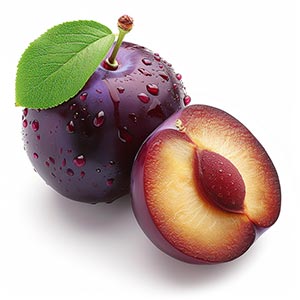Plum has been used in fragrances for centuries. Its sweet and fruity aroma adds a rich and luxurious note to any fragrance. Historically, plum was used in perfumes by ancient civilizations, appreciated for its unique and captivating scent. Over time, the use of plum in fragrances has evolved, with modern perfumers often combining it with other notes to create complex and intriguing scents. Today, plum continues to be a popular ingredient in many high-end and designer fragrances, valued for its versatility and the depth it adds to a fragrance's overall aroma.
Natural or Synthetic?
Natural extraction of plum scent is not commonly practiced in the perfume industry. This is primarily due to the difficulty in extracting a stable and distinct plum essence from the fruit, which can be a complex and costly process. Therefore, synthetic alternatives are typically used to replicate the scent of plum. These synthetic versions are created using a blend of chemical compounds that mimic the sweet and fruity characteristics of plum. Common components in these blends include various esters and synthetic molecules designed to replicate the rich, juicy, and sweet notes of plum.
Fragrance Families Plum Most Commonly Found In
Show fragrances that contain Plum as a note



